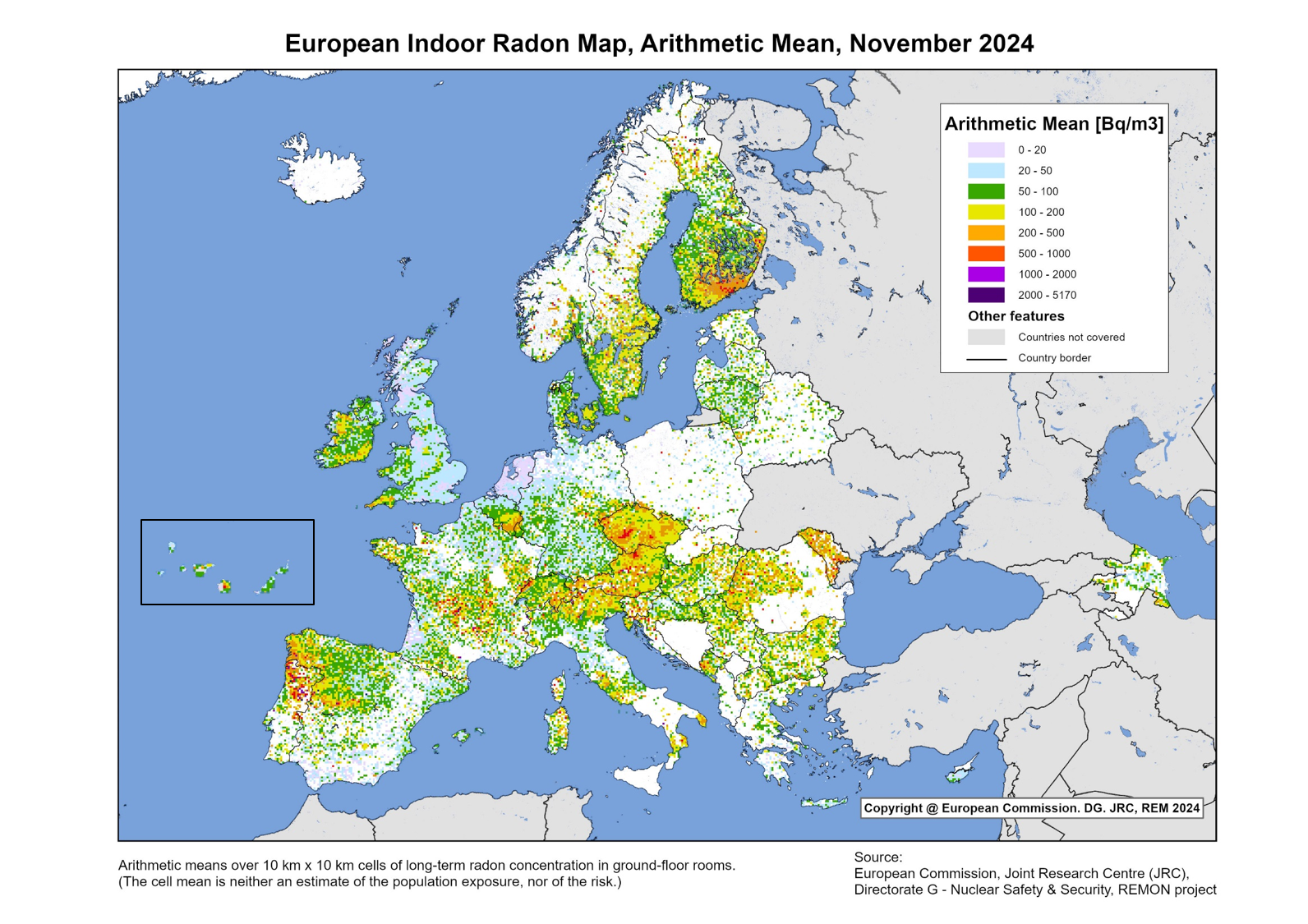European Indoor Radon Levels Map


Marcus Rodriguez
Historical Geography Expert
Marcus Rodriguez specializes in historical cartography and geographic data analysis. With a background in both history and geography, he brings unique...
Geographic Analysis
What This Map Shows
The European Indoor Radon Map is a comprehensive visualization that highlights the levels of radon gas found indoors across various European countries. This map is essential for understanding the potential health risks associated with radon exposure, which is a naturally occurring radioactive gas that can seep into homes and buildings from the ground. Radon is the second leading cause of lung cancer after smoking, making awareness of its distribution crucial for public health.
Deep Dive into Indoor Radon
Radon is a colorless, odorless gas produced by the decay of uranium in soil, rock, and water. It can accumulate in indoor spaces, particularly in basements and poorly ventilated areas, where it poses significant health risks. According to the World Health Organization (WHO), radon exposure is responsible for an estimated 3-14% of lung cancer cases, depending on the region.
Interestingly, radon levels can vary greatly even within small geographical areas due to differences in underlying geology. For instance, regions with granite or other uranium-rich rocks tend to have higher radon concentrations. One of the most concerning aspects of radon is that it can remain undetected without proper testing, as it is invisible and has no smell.
In Europe, certain countries are more prone to higher indoor radon levels. For example, countries like Norway, Sweden, and parts of the United Kingdom often report elevated radon levels due to their geological makeup. The presence of granite formations and the historical mining activities in certain areas contribute to these risks. The European Union has recognized the importance of addressing radon exposure, and various initiatives have been implemented to promote testing and mitigation strategies in homes.
Mitigation methods can include improving ventilation, sealing cracks in floors and walls, and installing radon reduction systems. However, awareness and action often depend on local regulations and public health campaigns, which can vary significantly across different regions.
Regional Analysis
When examining the European Indoor Radon Map, we see clear regional differences in radon levels. For example, the Nordic countries generally show higher radon concentrations, with Norway reporting levels that can exceed 200 Bq/m³ in some areas. On the other hand, Southern European countries like Spain and Greece typically report lower levels, often below 100 Bq/m³.
The Czech Republic is another noteworthy example; it has some of the highest radon levels in Europe, particularly in the Karlovy Vary region. Here, homes often exceed the action level set by the WHO, prompting local authorities to take significant action to address the issue.
Conversely, countries such as Ireland and the UK have developed extensive radon measurement and awareness programs, which have led to increased public knowledge about the risks and the importance of testing homes for radon. The approach to radon exposure varies widely, not just between countries but also within regions, as local geology can create micro-environments with significantly different radon levels.
Significance and Impact
Understanding the distribution of radon levels in Europe is more than a matter of geography; it has tangible implications for public health. Communities must be aware of the risks associated with radon exposure, and the map serves as a critical tool for raising awareness and guiding policy decisions.
Interestingly, as more people become aware of radon, there is a growing trend towards home testing and mitigation, leading to healthier living environments. Future projections indicate that as regulations tighten and awareness increases, we may see a decline in radon-related health issues in areas where preventive measures are adopted.
In conclusion, the European Indoor Radon Map is not just a visualization but a vital resource for understanding and combating a hidden health threat. With the right knowledge and tools, we can protect ourselves and our communities from the dangers of radon gas, turning awareness into action for a safer future.
Visualization Details
- Published
- September 30, 2025
- Views
- 52
Comments
Loading comments...